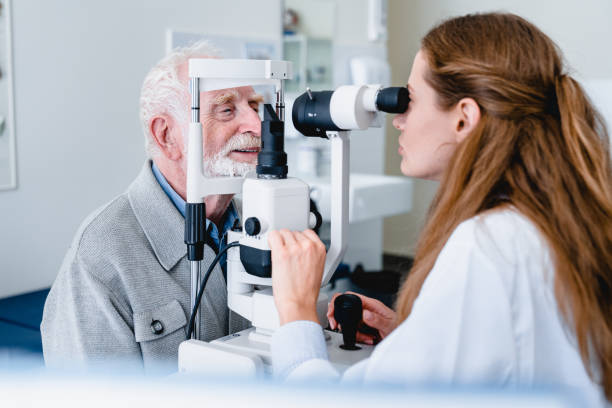What Seniors Need To Know About Cataracts
You might notice that when driving at night, the headlights of approaching vehicles have a starburst or halo effect around them. When you sit down and watch a program on television, the colors on the screen may appear faded and the resolution is no longer crisp and clear. You may even notice that your eyes are suddenly more sensitive to changes in the intensity of lighting, dim and bright.
If you are a senior and have experienced one or more of these changes in your vision, it is likely that you are developing a cataract in one of your eyes. Cataracts are a common problem that affects the vision of older adults. It is estimated that about 20 percent of people 65 and older have cataracts and the percentage increases to more than half of people 75 and above.
Left untreated, cataracts can lead to more serious vision problems including blindness. The good news is that cataract surgery is safe and can eliminate the vision problems associated with cataracts.
Understanding The Basics of Cataracts
Inside our eyes is a natural lens that focuses the light that comes into the eye so that we can see, similar to how the lens on a camera operates. A cataract is a clouding of this normally clear lens. When a cataract forms in the lens, the light that reaches the back of the eye (retina) is distorted and this is what causes the symptoms of vision impairment.
The primary reason a cataract forms in the eye is in most instances age related. Around the age of 40, the proteins in your eye lens begin to break down and clump together. This clumping creates a cloudy area in your lens and that is what becomes a cataract. Over time, the cataract will grow bigger and have a more noticeable effect on the quality of your vision.
Exploring Treatment Options for Cataracts
During the initial stages of a cataract, treatment options can include stronger eyewear prescriptions, reading glasses, and stronger lighting. When a cataract progresses to a point that it impacts your ability to perform normal daily activities, surgery is the only viable treatment alternative.
Cataract surgery is one of the most common medical procedures performed today. It is also very safe and effective, improving the vision in over 97 percent of people who have the surgery. Cataract surgery is now considered routine, taking only about 10 to 20 minutes to complete. During the operation, the eye surgeon removes the clouded lens and replaces it with an artificial lens (Intraocular lens or IOL).
In almost every situation, the procedure is performed on an out-patient basis and those receiving the surgery will notice marked improvement in their vision almost immediately or become progressively better over the next few days. Full recovery rarely takes about four weeks.
Advances in the technology of cataract surgery give patients more options to correct their vision post-surgery. New laser technologies and surgical procedures allow for more accurate and predictable results as well as enabling faster recovery. Different types of intraocular lenses (IOL’s) are now available that can correct astigmatism and other lenses are able to provide a broader field of vision at any range of distance. Many patients no longer need corrective lenses to see clearly for most activities following their surgery.
The Benefits of Regular Eye Exams
It is normal for your vision to change over your lifetime and especially when you reach your senior years. This is why it is recommended that if you are 65 or older, have your eyes checked every 1-2 years by your ophthalmologist. Having regularly scheduled eye exams can help your doctor identify vision problems early on and the sooner they are detected, the more likely it can be treated effectively.
At Valley Home Care, we offer transportation services for seniors who are in need of reliable caregivers who can help them travel to and from medical appointments.


Leave a Reply
You must be logged in to post a comment.